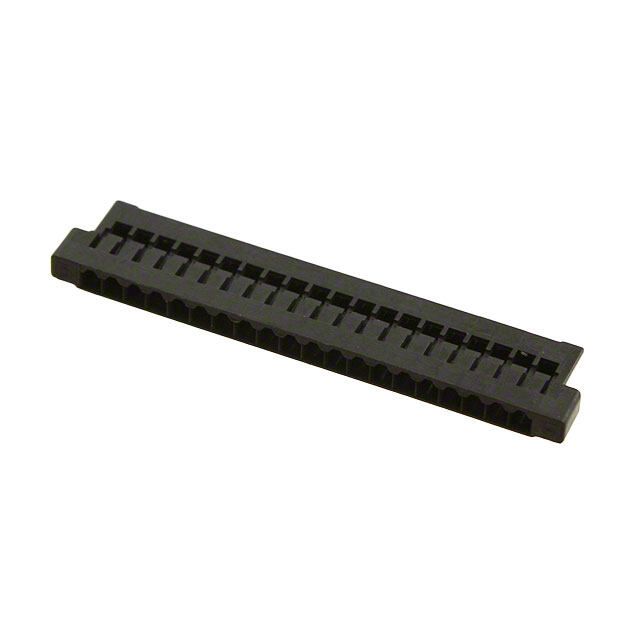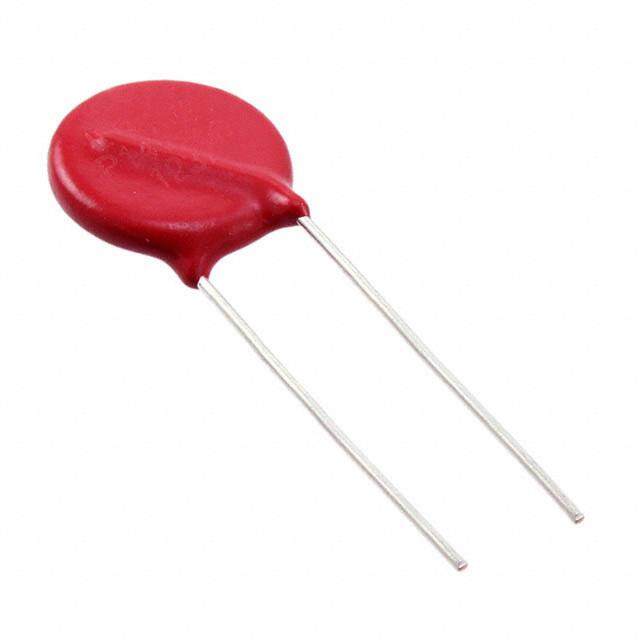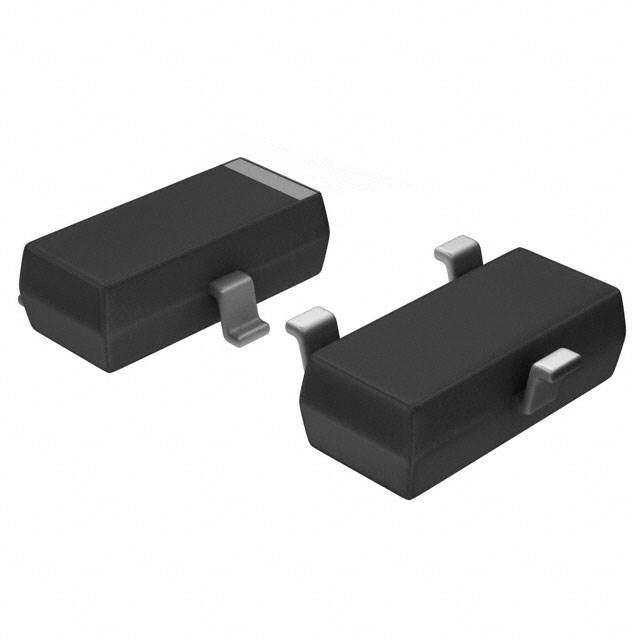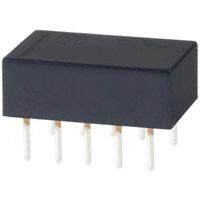ICGOO在线商城 > BU7461SG-TR
- 型号: BU7461SG-TR
- 制造商: ROHM Semiconductor
- 库位|库存: xxxx|xxxx
- 要求:
| 数量阶梯 | 香港交货 | 国内含税 |
| +xxxx | $xxxx | ¥xxxx |
查看当月历史价格
查看今年历史价格
BU7461SG-TR产品简介:
ICGOO电子元器件商城为您提供BU7461SG-TR由ROHM Semiconductor设计生产,在icgoo商城现货销售,并且可以通过原厂、代理商等渠道进行代购。 提供BU7461SG-TR价格参考¥1.97-¥2.59以及ROHM SemiconductorBU7461SG-TR封装/规格参数等产品信息。 你可以下载BU7461SG-TR参考资料、Datasheet数据手册功能说明书, 资料中有BU7461SG-TR详细功能的应用电路图电压和使用方法及教程。
| 参数 | 数值 |
| -3db带宽 | - |
| 产品目录 | 集成电路 (IC) |
| 描述 | IC OPAMP GP 1MHZ 5SSOP |
| 产品分类 | Linear - Amplifiers - Instrumentation, OP Amps, Buffer Amps |
| 品牌 | Rohm Semiconductor |
| 数据手册 | |
| 产品图片 |
|
| 产品型号 | BU7461SG-TR |
| rohs | 无铅 / 符合限制有害物质指令(RoHS)规范要求 |
| 产品系列 | - |
| 供应商器件封装 | 5-SSOP |
| 其它名称 | BU7461SG-TR-ND |
| 包装 | 带卷 (TR) |
| 压摆率 | 1 V/µs |
| 增益带宽积 | 1MHz |
| 安装类型 | 表面贴装 |
| 封装/外壳 | 6-TFSOP(0.063",1.60mm 宽),5 引线 |
| 工作温度 | -40°C ~ 105°C |
| 放大器类型 | 通用 |
| 标准包装 | 3,000 |
| 特色产品 | http://www.digikey.com/cn/zh/ph/ROHM/CMOSOpAmp.html |
| 电压-电源,单/双 (±) | 1.7 V ~ 5.5 V, ±0.85 V ~ 2.75 V |
| 电压-输入失调 | 1mV |
| 电流-电源 | 150µA |
| 电流-输入偏置 | 1pA |
| 电流-输出/通道 | 12mA |
| 电路数 | 1 |
| 输出类型 | - |


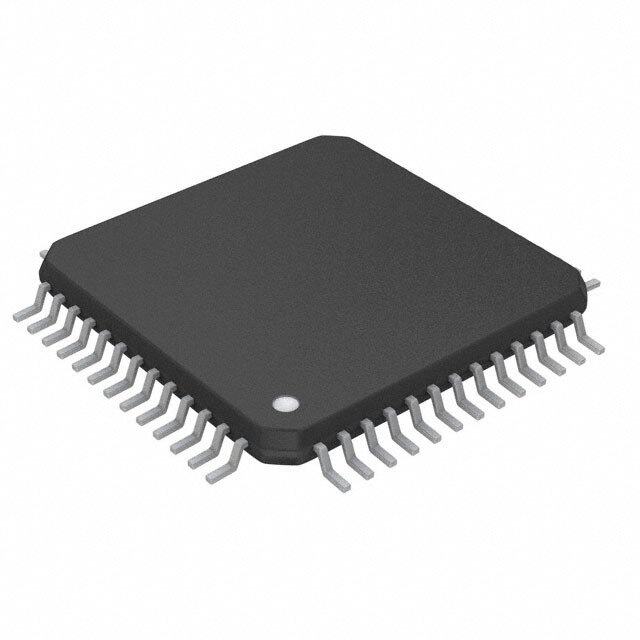

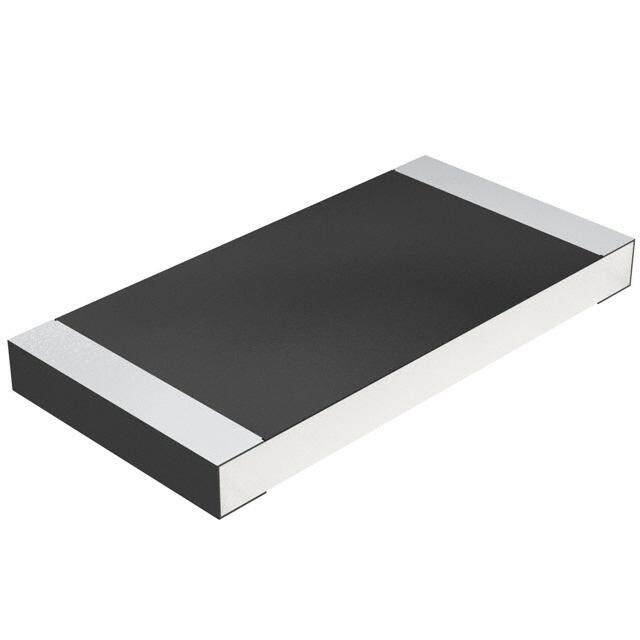
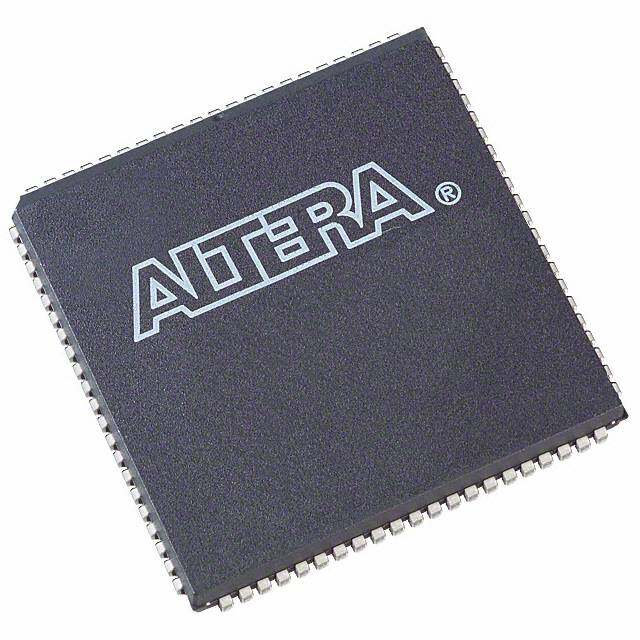
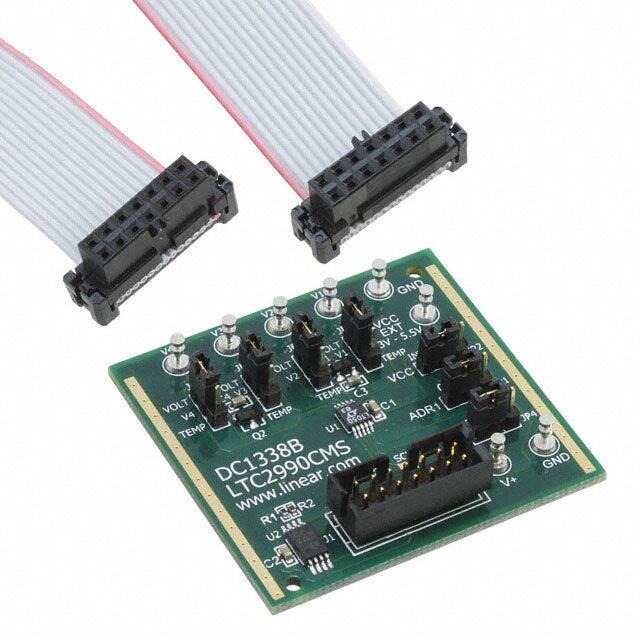

- 商务部:美国ITC正式对集成电路等产品启动337调查
- 曝三星4nm工艺存在良率问题 高通将骁龙8 Gen1或转产台积电
- 太阳诱电将投资9.5亿元在常州建新厂生产MLCC 预计2023年完工
- 英特尔发布欧洲新工厂建设计划 深化IDM 2.0 战略
- 台积电先进制程称霸业界 有大客户加持明年业绩稳了
- 达到5530亿美元!SIA预计今年全球半导体销售额将创下新高
- 英特尔拟将自动驾驶子公司Mobileye上市 估值或超500亿美元
- 三星加码芯片和SET,合并消费电子和移动部门,撤换高东真等 CEO
- 三星电子宣布重大人事变动 还合并消费电子和移动部门
- 海关总署:前11个月进口集成电路产品价值2.52万亿元 增长14.8%
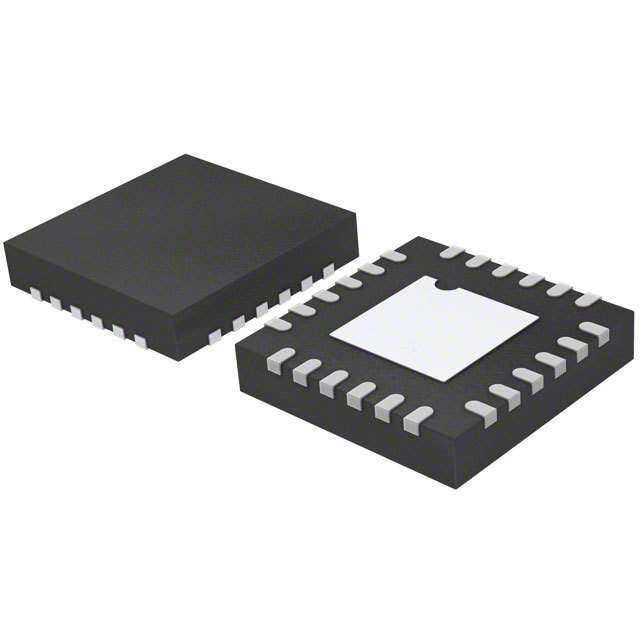
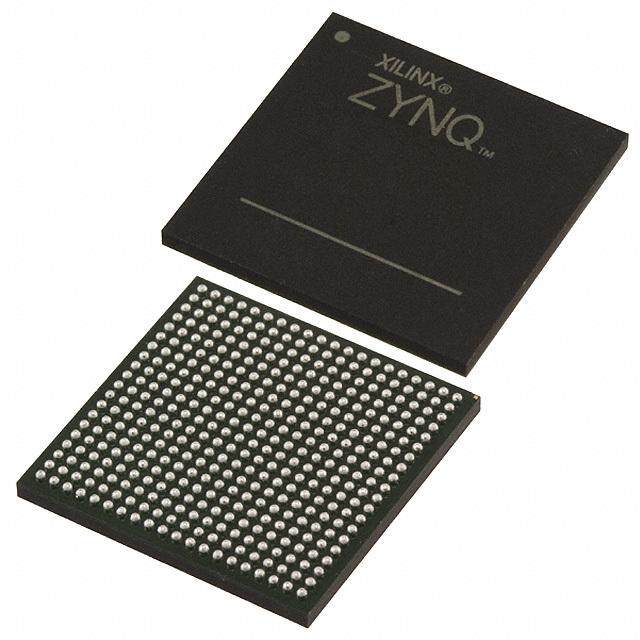
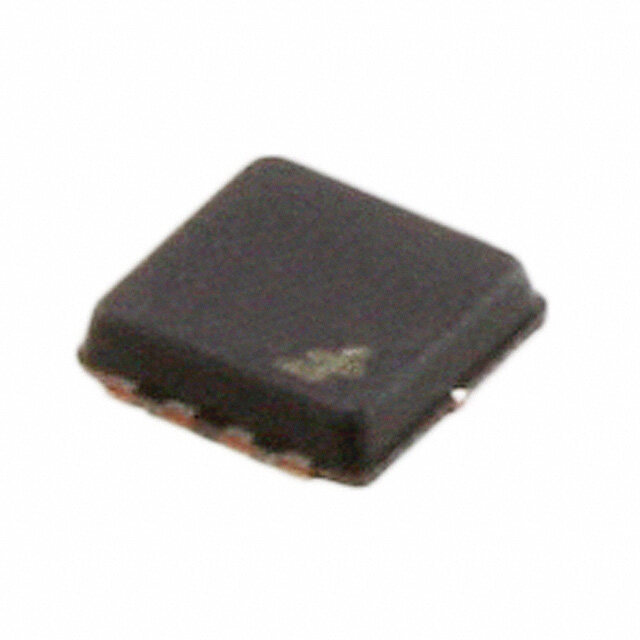

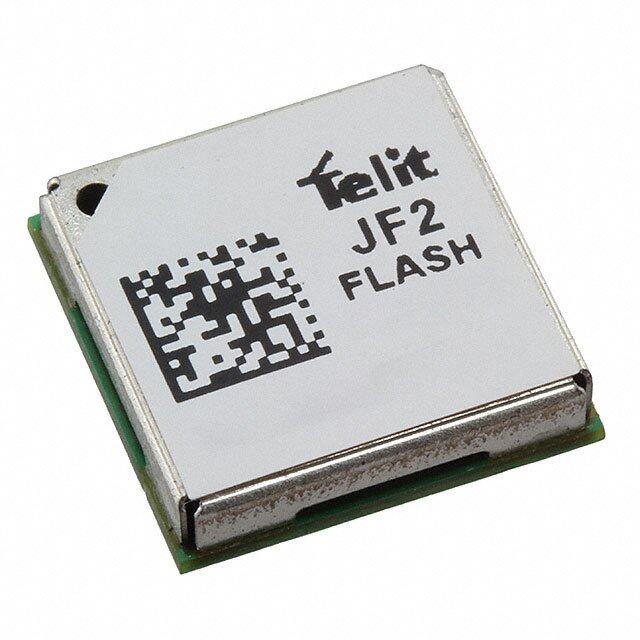

PDF Datasheet 数据手册内容提取
Datasheet Operational Amplifiers Ground Sense Low Voltage Operation CMOS Operational Am plifiers BU7461G BU7461SG BU7462xxx BU7462Sxxx BU7464F BU7464SF General Description Key Specifications BU7461G/BU7462xxx/BU7464F are input ground Operating Supply Voltage: +1.7V to +5.5V sense, output full swing CMOS operational amplifiers. Supply Current: 150µA/ch(Typ) BU7461SG/BU7462Sxxx/BU7464SF have an expanded Temperature Range: operating temperature range. They have the features of BU7461G/BU7462xxx/BU7464F low operating supply voltage, low supply current and low -40°C to +85°C input bias current. These are suitable for portable BU7461SG/BU7462Sxxx/BU7464SF equipment and sensor amplifiers. -40°C to +105°C Input Offset Current: 1pA (Typ) Features Input Bias Current: 1pA (Typ) Low Supply Current Low Operating Supply Voltage Packages Wide Temperature Range W(Typ) x D(Typ) x H(Max) Low Input Bias Current SSOP5 2.90mm x 2.80mm x 1.25mm SOP8 5.00mm x 6.20mm x 1.71mm Applications MSOP8 2.90mm x 4.00mm x 0.90mm Sensor Amplifier VSON008X2030 2.00mm x 3.00mm x 0.60mm Portable Equipment SOP14 8.70mm x 6.20mm x 1.71mm Consumer Equipment Simplified Schematic VDD V bias IN+ Class OUT IN- AB control V bias VSS Figure 1. Simplified Schematic (1 channel only) ○Product structure:Silicon monolithic integrated circuit ○This product has no designed protection against radioactive rays www.rohm.com TSZ02201-0RAR1G200150-1-2 © 2013 ROHM Co., Ltd. All rights reserved. 1/40 TSZ22111 • 14 • 001 13.Feb.2015 Rev003
BU7461G BU7461SG BU7462xxx BU7462Sxxx BU7464F BU7464SF Datasheet Pin Configuration BU7461G, BU7461SG : SSOP5 Pin No. Pin Name IN+ 1 5 VDD 1 IN+ 2 VSS + VSS 2 - 3 IN- 4 OUT IN- 3 4 OUT 5 VDD BU7462F, BU7462SF : SOP8 BU7462FVM, BU7462SFVM : MSOP8 BU7462NUX, BU7462SNUX : VSON008X2030 Pin No. Pin Name 1 OUT1 2 IN1- OUT1 1 8 VDD 3 IN1+ IN1- 2 C H1 7 OUT2 4 VSS - ++ 5 IN2+ IN1+ 3 +C H2- 6 IN2- 6 IN2- 7 OUT2 VSS 4 5 IN2+ 8 VDD BU7464F, BU7464SF : SOP14 Pin No. Pin Name 1 OUT1 OUT1 1 14 OUT4 2 IN- 3 IN+ IN1- 2 13 IN4- C H1 C H4 -- ++ ++ -- 4 VDD IN1+ 3 12 IN4+ 5 IN2+ VDD 4 11 VSS 6 IN2- 7 OUT2 IN2+ 5 10 IN3+ 8 OUT3 -- ++ ++ -- IN2- 6 C H2 C H3 9 IN3- 9 IN3- 10 IN3+ OUT2 7 8 OUT3 11 VSS 12 IN4+ 13 IN4- 14 OUT4 Package SSOP5 SOP8 MSOP8 VSON008X2030 SOP14 BU7461G BU7462F BU7462FVM BU7462NUX BU7464F BU7461SG BU7462SF BU7462SFVM BU7462SNUX BU7464SF www.rohm.com TSZ02201-0RAR1G200150-1-2 © 2013 ROHM Co., Ltd. All rights reserved. 2/40 13.Feb.2015 Rev003 TSZ22111・15・001
BU7461G BU7461SG BU7462xxx BU7462Sxxx BU7464F BU7464SF Datasheet Ordering Information B U 7 4 6 x x x x x - x x Part Number Package Packaging and forming specification BU7461G G :ISSOP5 E2: Embossed tape and reel BU7461SG F : SOP8 (SOP8/SOP14) BU7462xxx F : SOP14 TR: Embossed tape and reel BU7462Sxxx FVM : MSOP8 (SSOP5/MSOP8/VSON008X2030) BU7464F NUX : VSON008X2030F BU7464SF Line-up T Channels Package Orderable Part Number opr 1ch SSOP5 Reel of 3000 BU7461G-TR SOP8 Reel of 2500 BU7462F-E2 -40°C to +85°C 2ch MSOP8 Reel of 3000 BU7462FVM-TR VSON008X2030 Reel of 4000 BU7462NUX-TR 4ch SOP14 Reel of 2500 BU7464F-E2 1ch SSOP5 Reel of 3000 BU7461SG-TR SOP8 Reel of 2500 BU7462SF-E2 -40°C to +105°C 2ch MSOP8 Reel of 3000 BU7462SFVM-TR VSON008X2030 Reel of 4000 BU7462SNUX-TR 4ch SOP14 Reel of 2500 BU7464SF-E2 www.rohm.com TSZ02201-0RAR1G200150-1-2 © 2013 ROHM Co., Ltd. All rights reserved. 3/40 13.Feb.2015 Rev003 TSZ22111・15・001
BU7461G BU7461SG BU7462xxx BU7462Sxxx BU7464F BU7464SF Datasheet Absolute Maximum Ratings(T =25°C) A Rating Parameter Symbol Unit BU7461G BU7462xxx BU7464F Supply Voltage VDD-VSS +7 V SSOP5 0.54 (Note1,6) - - SOP8 - 0.55 (Note2,6) - Power Dissipation P MSOP8 - 0.47 (Note3,6) - W D VSON008X2030 - 0.41 (Note4,6) - SOP14 - - 0.45 (Note5,6) Differential Input Voltage(Note 7) V VDD - VSS V ID Input Common-mode V (VSS-0.3) to (VDD+0.3) V Voltage Range ICM Input Current(Note 8) I ±10 mA I Operating Supply Voltage V +1.7V to +5.5V V opr Operating Temperature T -40 to +85 °C opr Storage Temperature T -55 to +125 °C stg Maximum Junction Temperature T +125 °C Jmax (Note 1) To use at temperature above TA=25C reduce 5.4mW/C. (Note 2) To use at temperature above TA=25C reduce 5.5mW/C. (Note 3) To use at temperature above TA=25C reduce 4.7mW/C. (Note 4) To use at temperature above TA=25C reduce 4.1mW/C. (Note 5) To use at temperature above TA=25C reduce 4.5mW/C. (Note 6) Mounted on a FR4 glass epoxy PCB 70mm×70mm×1.6mm (Copper foil area less than 3%). (Note 7) The voltage difference between inverting input and non-inverting input is the differential input voltage. Then input terminal voltage is set to more than VSS. (Note 8) An excessive input current will flow when input voltages of more than VDD+0.6V or less than VSS-0.6V are applied. The input current can be set to less than the rated current by adding a limiting resistor. Caution: Operating the IC over the absolute maximum ratings may damage the IC. In addition, it is impossible to predict all destructive situations such as short-circuit modes, open circuit modes, etc. Therefore, it is important to consider circuit protection measures, like adding a fuse, in case the IC is operated in a special mode exceeding the absolute maximum ratings. Rating Parameter Symbol Unit BU7461SG BU7462Sxxx BU7464SF Supply Voltage VDD-VSS +7 V SSOP5 0.54 (Note9,14) - - SOP8 - 0.55 (Note10,14) - Power Dissipation P MSOP8 - 0.47 (Note11,14) - W D VSON008X2030 - 0.41 (Note12,14) - SOP14 - - 0.45 (Note13,14) Differential Input Voltage(Note 15) V VDD - VSS V ID Input Common-mode V (VSS-0.3) to (VDD+0.3) V Voltage Range ICM Input Current(Note 16) I ±10 mA I Operating Supply Voltage V +1.7V to +5.5V V opr Operating Temperature T -40 to +105 °C opr Storage Temperature T -55 to +125 °C stg Maximum Junction Temperature T +125 °C Jmax (Note 9) To use at temperature above TA=25C reduce 5.4mW/C. (Note 10) To use at temperature above TA=25C reduce 5.5mW/C. (Note 11) To use at temperature above TA=25C reduce 4.7mW/C. (Note 12) To use at temperature above TA=25C reduce 4.1mW/C. (Note 13) To use at temperature above TA=25C reduce 4.5mW/C. (Note 14) Mounted on a FR4 glass epoxy PCB 70mm×70mm×1.6mm (Copper foil area less than 3%). (Note 15) The voltage difference between inverting input and non-inverting input is the differential input voltage. Then input terminal voltage is set to more than VSS. (Note 16) An excessive input current will flow when input voltages of more than VDD+0.6V or less than VSS-0.6V are applied. The input current can be set to less than the rated current by adding a limiting resistor. Caution: Operating the IC over the absolute maximum ratings may damage the IC. In addition, it is impossible to predict all destructive situations such as short-circuit modes, open circuit modes, etc. Therefore, it is important to consider circuit protection measures, like adding a fuse, in case the IC is operated in a special mode exceeding the absolute maximum ratings. www.rohm.com TSZ02201-0RAR1G200150-1-2 © 2013 ROHM Co., Ltd. All rights reserved. 4/40 13.Feb.2015 Rev003 TSZ22111・15・001
BU7461G BU7461SG BU7462xxx BU7462Sxxx BU7464F BU7464SF Datasheet Electrical Characteristics ○BU7461G, BU7461SG(Unless otherwise specified VDD=+3V, VSS=0V, T =25°C) A Limit Temperature Parameter Symbol Unit Conditions Range Min Typ Max Input Offset Voltage (Note 17) V 25°C - 1 6 mV - IO Input Offset Current (Note 17) I 25°C - 1 - pA - IO Input Bias Current (Note 17) I 25°C - 1 - pA - B Supply Current (Note 18) I 25°C - 150 350 μA RL=∞ DD Full range - - 450 AV=0dB, IN+=0.9V Maximum Output Voltage(High) V 25°C VDD-0.1 - - V R =10kΩ OH L Maximum Output Voltage(Low) V 25°C - - VSS+0.1 V R =10kΩ OL L Large Signal Voltage Gain A 25°C 70 95 - dB R =10kΩ V L Input Common-mode V 25°C 0 - 1.8 V VSS to VDD-1.2V Voltage Range ICM Common-mode CMRR 25°C 45 60 - dB - Rejection Ratio Power Supply PSRR 25°C 60 80 - dB - Rejection Ratio Output Source Current (Note 19) I 25°C 4 8 - mA VDD-0.4V SOURCE Output Sink Current (Note 19) I 25°C 6 12 - mA VSS+0.4V SINK Slew Rate SR 25°C - 1 - V/μs C =25pF L Gain Bandwidth GBW 25°C - 1 - MHz C =25pF, A =40dB L V Phase Margin θ 25°C - 50 - deg C =25pF, A =40dB L V Total Harmonic Distortion + OUT=0.8V THD+N 25°C - 0.05 - % P-P Noise f=1kHz (Note 17) Absolute value (Note 18) Full range: BU7461G: TA=-40°C to +85°C, BU7461SG: TA=-40°C to +105°C (Note 19) Under the high temperature environment, consider the power dissipation of IC when selecting the output current. When the terminal short circuits are continuously output, the output current is reduced to climb to the temperature inside IC. www.rohm.com TSZ02201-0RAR1G200150-1-2 © 2013 ROHM Co., Ltd. All rights reserved. 5/40 13.Feb.2015 Rev003 TSZ22111・15・001
BU7461G BU7461SG BU7462xxx BU7462Sxxx BU7464F BU7464SF Datasheet Electrical Characteristics - continued ○BU7462xxx, BU7462Sxxx(Unless otherwise specified VDD=+3V, VSS=0V, T =25°C) A Limit Temperature Parameter Symbol Unit Conditions Range Min Typ Max Input Offset Voltage (Note 20) V 25°C - 1 6 mV - IO Input Offset Current (Note 20) I 25°C - 1 - pA - IO Input Bias Current (Note 20) I 25°C - 1 - pA - B Supply Current (Note 21) I 25°C - 300 700 μA RL=∞, All Op-Amps DD Full range - - 900 AV=0dB, IN+=0.9V Maximum Output Voltage(High) V 25°C VDD-0.1 - - V R =10kΩ OH L Maximum Output Voltage(Low) V 25°C - - VSS+0.1 V R =10kΩ OL L Large Signal Voltage Gain A 25°C 70 95 - dB R =10kΩ V L Input Common-mode V 25°C 0 - 1.8 V VSS to VDD-1.2V Voltage Range ICM Common-mode CMRR 25°C 45 60 - dB - Rejection Ratio Power Supply PSRR 25°C 60 80 - dB - Rejection Ratio Output Source Current (Note 22) I 25°C 4 8 - mA VDD-0.4V SOURCE Output Sink Current (Note 22) I 25°C 6 12 - mA VSS+0.4V SINK Slew Rate SR 25°C - 1 - V/μs C =25pF L Gain Bandwidth GBW 25°C - 1 - MHz C =25pF, A =40dB L V Phase Margin θ 25°C - 50 - deg C =25pF, A =40dB L V Total Harmonic Distortion + OUT=0.8V THD+N 25°C - 0.05 - % P-P Noise f=1kHz Channel Separation CS 25°C - 100 - dB A =40dB, OUT=1Vrms V (Note 20) Absolute value (Note 21) Full range: BU7462xxx: TA=-40°C to +85°C, BU7462Sxxx: TA=-40°C to +105°C (Note 22) Under the high temperature environment, consider the power dissipation of IC when selecting the output current. When the terminal short circuits are continuously output, the output current is reduced to climb to the temperature inside IC. www.rohm.com TSZ02201-0RAR1G200150-1-2 © 2013 ROHM Co., Ltd. All rights reserved. 6/40 13.Feb.2015 Rev003 TSZ22111・15・001
BU7461G BU7461SG BU7462xxx BU7462Sxxx BU7464F BU7464SF Datasheet Electrical Characteristics - continued ○BU7464F, BU7464SF(Unless otherwise specified VDD=+3V, VSS=0V, T =25°C) A Limit Temperature Parameter Symbol Unit Conditions Range Min Typ Max Input Offset Voltage (Note 23) V 25°C - 1 6 mV - IO Input Offset Current (Note 23) I 25°C - 1 - pA - IO Input Bias Current (Note 23) I 25°C - 1 - pA - B Supply Current (Note 24) I 25°C - 600 1400 μA RL=∞, All Op-Amps DD Full range - - 1800 AV=0dB, IN+ =0.9V Maximum Output Voltage(High) V 25°C VDD-0.1 - - V R =10kΩ OH L Maximum Output Voltage(Low) V 25°C - - VSS+0.1 V R =10kΩ OL L Large Signal Voltage Gain A 25°C 70 95 - dB R =10kΩ V L Input Common-mode V 25°C 0 - 1.8 V VSS to VDD-1.2V Voltage Range ICM Common-mode CMRR 25°C 45 60 - dB - Rejection Ratio Power Supply PSRR 25°C 60 80 - dB - Rejection Ratio Output Source Current (Note 25) I 25°C 4 8 - mA VDD-0.4V SOURCE Output Sink Current (Note 25) I 25°C 6 12 - mA VSS+0.4V SINK Slew Rate SR 25°C - 1 - V/μs C =25pF L Gain Bandwidth GBW 25°C - 1 - MHz C =25pF, A =40dB L V Phase Margin θ 25°C - 50 - deg C =25pF, A =40dB L V Total Harmonic Distortion + OUT=0.8V THD+N 25°C - 0.05 - % P-P Noise f=1kHz Channel Separation CS 25°C - 100 - dB A =40dB, OUT=1Vrms V (Note 23) Absolute value (Note 24) Full range: BU7464F: TA=-40°C to +85°C, BU7464SF: TA=-40°C to +105°C (Note 25) Under the high temperature environment, consider the power dissipation of IC when selecting the output current. When the terminal short circuits are continuously output, the output current is reduced to climb to the temperature inside IC. www.rohm.com TSZ02201-0RAR1G200150-1-2 © 2013 ROHM Co., Ltd. All rights reserved. 7/40 13.Feb.2015 Rev003 TSZ22111・15・001
BU7461G BU7461SG BU7462xxx BU7462Sxxx BU7464F BU7464SF Datasheet Description of Electrical Characteristics Described here are the terms of electric characteristics used in this technical note. Items and symbols used are also shown. Note that item name and symbol and their meaning may differ from those on another manufacture’s document or general document. 1. Absolute maximum ratings Absolute maximum rating item indicates the condition which must not be exceeded. Application of voltage in excess of absolute maximum rating or use out of absolute maximum rated temperature environment may cause deterioration of characteristics. (1) Supply Voltage (VDD/VSS) Indicates the maximum voltage that can be applied between the VDD terminal and VSS terminal without deterioration or destruction of characteristics of internal circuit. (2) Differential Input Voltage (V ) ID Indicates the maximum voltage that can be applied between non-inverting terminal and inverting terminal without deterioration and destruction of characteristics of IC. (3) Input Common-mode Voltage Range (V ) ICM Indicates the maximum voltage that can be applied to the non-inverting and inverting terminals without deterioration or destruction of electrical characteristics. Input common-mode voltage range of the maximum ratings does not assure normal operation of IC. For normal operation, use the IC within the input common-mode voltage range characteristics. (4) Power Dissipation (P ) D Indicates the power that can be consumed by the IC when mounted on a specific board at the ambient temperature 25°C (normal temperature). As for package product, P is determined by the temperature that can be permitted by the IC in D the package (maximum junction temperature) and the thermal resistance of the package. 2. Electrical characteristics (1) Input Offset Voltage (V ) IO Indicates the voltage difference between non-inverting terminal and inverting terminals. It can be translated into the input voltage difference required for setting the output voltage at 0V. (2) Input Offset Current (I ) IO Indicates the difference of input bias current between the non-inverting and inverting terminals. (3) Input Bias Current (I ) B Indicates the current that flows into or out of the input terminal. It is defined by the average of input bias currents at the non-inverting and inverting terminals. (4) Supply Current (I ) DD Indicates the current that flows within the IC under specified no-load conditions. (5) Maximum Output Voltage(High) / Maximum Output Voltage(Low) (V /V ) OH OL Indicates the voltage range of the output under specified load condition. It is typically divided into maximum output voltage High and low. Maximum output voltage high indicates the upper limit of output voltage. Maximum output voltage low indicates the lower limit. (6) Large Signal Voltage Gain (A ) V Indicates the amplifying rate (gain) of output voltage against the voltage difference between non-inverting terminal and inverting terminal. It is normally the amplifying rate (gain) with reference to DC voltage. A = (Output voltage) / (Differential Input voltage) V (7) Input Common-mode Voltage Range (V ) ICM Indicates the input voltage range where IC operates normally. (8) Common-mode Rejection Ratio (CMRR) Indicates the ratio of fluctuation of input offset voltage when the input common mode voltage is changed. It is normally the fluctuation of DC. CMRR = (Change of Input common-mode voltage)/(Input offset fluctuation) (9) Power Supply Rejection Ratio (PSRR) Indicates the ratio of fluctuation of input offset voltage when supply voltage is changed. It is normally the fluctuation of DC. PSRR = (Change of power supply voltage)/(Input offset fluctuation) (10) Output Source Current/ Output Sink Current (I / I ) SOURCE SINK The maximum current that can be output from the IC under specific output conditions. The output source current indicates the current flowing out from the IC, and the output sink current indicates the current flowing into the IC. (11) Slew Rate (SR) Indicates the ratio of the change in output voltage with time when a step input signal is applied. (12) Gain Bandwidth (GBW) Indicates a frequency where the voltage gain of operational amplifier is 1. (13) Phase Margin (θ) Indicates the margin of phase from 180 degree phase lag at unity gain frequency. (14) Total Harmonic Distortion + Noise (THD+N) Indicates the fluctuation of input offset voltage or that of output voltage with reference to the change of output voltage of driven channel. (15) Channel Separation (CS) Indicates the fluctuation in the output voltage of the driven channel with reference to the change of output voltage of the channel which is not driven. www.rohm.com TSZ02201-0RAR1G200150-1-2 © 2013 ROHM Co., Ltd. All rights reserved. 8/40 13.Feb.2015 Rev003 TSZ22111・15・001
BU7461G BU7461SG BU7462xxx BU7462Sxxx BU7464F BU7464SF Datasheet Typical Performance Curves ○BU7461G, BU7461SG 1.0 1.0 0.8 0.8 W] W] n [ n [ o 0.6 o 0.6 ati ati p p ssi BU7461G ssi BU7461SG Di Di r 0.4 r 0.4 e e w w o o P P 0.2 0.2 0.0 0.0 85 105 0 25 50 75 100 125 150 0 25 50 75 100 125 150 Ambient Temperature [°C] Ambient Temperature [°C] Figure 2. Figure 3. Power Dissipation vs Ambient Temperature Power Dissipation vs Ambient Temperature Derating Curve Derating Curve 300 300 105℃ 250 250 85℃ 5.5V 3.0V A] 200 A] 200 μ µ urrent [ 150 urrent [ 150 C C ply 25℃ ply 1.7V Sup 100 -40℃ Sup 100 50 50 0 0 1 2 3 4 5 6 -50 -25 0 25 50 75 100 125 Supply Voltage [V] Ambient Temperature [°C] Figure 4. Figure 5. Supply Current vs Supply Voltage Supply Current vs Ambient Temperature (*)The above characteristics are measurements of typical sample, they are not guaranteed. BU7461G: -40°C to +85°C BU7461SG: -40°C to +105°C www.rohm.com TSZ02201-0RAR1G200150-1-2 © 2013 ROHM Co., Ltd. All rights reserved. 9/40 13.Feb.2015 Rev003 TSZ22111・15・001
BU7461G BU7461SG BU7462xxx BU7462Sxxx BU7464F BU7464SF Datasheet Typical Performance Curves – continued ○BU7461G, BU7461SG 6 8 V] 5 V] High) [ 105°C High) [ 6 5.5V e ( 4 e ( g g Volta 3 85°C 25°C Volta 4 put put 3.0V ut ut O -40°C O m 2 m 1.7V u u m m 2 xi xi a a M 1 M 0 0 1 2 3 4 5 6 -50 -25 0 25 50 75 100 125 Ambient Temperature [°C] Supply Voltage [V] Figure 6. Figure 7. Maximum Output Voltage (High) vs Supply Voltage Maximum Output Voltage (High) vs Ambient Temperature (R =10kΩ) (R =10kΩ) L L 12 8 V] V] m m w) [ 9 w) [ 6 o o 5.5V ge (L ge (L Volta 6 105°C Volta 4 utput 85°C utput 1.7V O O m m 3.0V mu 3 mu 2 axi 25°C axi M M -40°C 0 0 1 2 3 4 5 6 -50 -25 0 25 50 75 100 125 Supply Voltage [V] Ambient Temperature [°C] Figure 8. Figure 9. Maximum Output Voltage (Low) vs Supply Voltage Maximum Output Voltage (Low) vs Ambient Temperature (RL=10kΩ) (RL=10kΩ) (*)The above characteristics are measurements of typical sample, they are not guaranteed. BU7461G: -40°C to +85°C BU7461SG: -40°C to +105°C www.rohm.com TSZ02201-0RAR1G200150-1-2 © 2013 ROHM Co., Ltd. All rights reserved. 10/40 13.Feb.2015 Rev003 TSZ22111・15・001
BU7461G BU7461SG BU7462xxx BU7462Sxxx BU7464F BU7464SF Datasheet Typical Performance Curves – continued ○BU7461G, BU7461SG 40 20 -40°C A] 30 A]15 m m ent [ 25°C ent [ 5.5V urr urr C C ce 20 ce 10 ur ur 3.0V o o S 105°C 85°C S ut ut p p ut 10 ut 5 O O 1.7V 0 0 0 0.5 1 1.5 2 2.5 3 -50 -25 0 25 50 75 100 125 Output Voltage [V] Ambient Temperature [°C] Figure 10. Figure 11. Output Source Current vs Output Voltage Output Source Current vs Ambient Temperature (VDD=3 V) (OUT=VDD-0.4V) 80 60 -40°C 50 60 A] A] m m nt [ 25°C nt [ 40 urre urre 5.5V C 40 C 30 nk nk Si 105°C Si 3.0V put 85°C put 20 ut ut O 20 O 1.7V 10 0 0 0.0 0.5 1.0 1.5 2.0 2.5 3.0 -50 -25 0 25 50 75 100 125 Output Voltage [V] Ambient Temperature [°C] Figure 12. Figure 13. Output Sink Current vs Output Voltage Output Sink Current vs Ambient Temperature (VDD=3V) (OUT=VSS+0.4V) (*)The above characteristics are measurements of typical sample, they are not guaranteed. BU7461G: -40°C to +85°C BU7461SG: -40°C to +105°C www.rohm.com TSZ02201-0RAR1G200150-1-2 © 2013 ROHM Co., Ltd. All rights reserved. 11/40 13.Feb.2015 Rev003 TSZ22111・15・001
BU7461G BU7461SG BU7462xxx BU7462Sxxx BU7464F BU7464SF Datasheet Typical Performance Curves – continued ○BU7461G, BU7461SG 4.0 4.0 3.0 3.0 V] 2.0 V] 2.0 m -40℃ 25℃ m e [ 1.0 e [ 1.0 5.5V g g a a Volt 0.0 105℃ 85℃ Volt 0.0 3.0V et et 1.7V s s Off -1.0 Off -1.0 ut ut p p In -2.0 In -2.0 -3.0 -3.0 -4.0 -4.0 1 2 3 4 5 6 -50 -25 0 25 50 75 100 125 Supply Voltage [V] Ambient Temperature [°C] Figure 14. Figure 15. Input Offset Voltage vs Supply Voltage Input Offset Voltage vs Ambient Temperature (V =VDD-1.2V, E=-VDD/2) (V =VDD-1.2V, E=-VDD/2) ICM k ICM k 4 200 3 180 mV] 2 -2450℃℃ 85℃ n [dB] 114600 -40℃ 25℃ e [ 1 Gai ag e 120 olt 105℃ ag Offset V-01 nal Volt 18000 105℃ 85℃ ut Sig np e 60 I-2 rg a L 40 -3 20 -4 0 -1.0 -0.5 0.0 0.5 1.0 1.5 2.0 2.5 3.0 1 2 3 4 5 6 Input Voltage [V] Supply Voltage [V] Figure 16. Figure 17. Input Offset Voltage vs Input Voltage Large Signal Voltage Gain vs Supply Voltage (VDD=3V) (*)The above characteristics are measurements of typical sample, they are not guaranteed. BU7461G: -40°C to +85°C BU7461SG: -40°C to +105°C www.rohm.com TSZ02201-0RAR1G200150-1-2 © 2013 ROHM Co., Ltd. All rights reserved. 12/40 13.Feb.2015 Rev003 TSZ22111・15・001
BU7461G BU7461SG BU7462xxx BU7462Sxxx BU7464F BU7464SF Datasheet Typical Performance Curves – continued ○BU7461G, BU7461SG 200 200 180 180 B] B] 160 d 160 e Gain [d 112400 3.0V 5.5V on Ratio [ 112400 -40℃ nal Voltag 18000 1.7V de Rejecti 18000 25℃ g o Si M 105℃ 85℃ ge 60 on 60 ar m L 40 m 40 o C 20 20 0 0 -50 -25 0 25 50 75 100 125 1 2 3 4 5 6 Ambient Temperature [°C] Supply Voltage [V] Figure 18. Figure 19. Large Signal Voltage Gain vs Ambient Temperature Common Mode Rejection Ratio vs Supply Voltage 200 200 180 180 Ratio [dB] 114600 Ratio [dB] 114600 on 120 5.5V on 120 cti cti e e ej100 ej 100 R R de 80 1.7V ply 80 Mo 3.0V up n 60 S 60 mo er m 40 ow 40 o P C 20 20 0 0 -50 -25 0 25 50 75 100 125 -50 -25 0 25 50 75 100 125 Ambient Temperature [°C] Ambient Temperature [°C] Figure 20. Figure 21. Common Mode Rejection Ratio vs Ambient Temperature Power Supply Rejection Ratio vs Ambient Temperature (*)The above characteristics are measurements of typical sample, they are not guaranteed. BU7461G: -40°C to +85°C BU7461SG: -40°C to +105°C www.rohm.com TSZ02201-0RAR1G200150-1-2 © 2013 ROHM Co., Ltd. All rights reserved. 13/40 13.Feb.2015 Rev003 TSZ22111・15・001
BU7461G BU7461SG BU7462xxx BU7462Sxxx BU7464F BU7464SF Datasheet Typical Performance Curves – continued ○BU7461G, BU7461SG 2.0 2.0 1.5 1.5 H [V/µs] 5.5V L [V/µs] 3.0V 5.5V L- H- e 1.0 e 1.0 at at R R w 1.7V 3.0V w e e Sl Sl 0.5 0.5 1.7V 0.0 0.0 -50 -25 0 25 50 75 100 125 -50 -25 0 25 50 75 100 125 Ambient Temperature [°C] Ambient Temperature [°C] Figure 22. Figure 23. Slew Rate L-H vs Ambient Temperature Slew Rate H-L vs Ambient Temperature 100 200 Phase 80 150 B] n[d 60 g] ai de oltage G 40 Gain 100Phase [ V 50 20 0 0 1.1E +1 1 .1E0+1 11.E0+2 1 1.E0+3 11.0E4+ 11.E0+5 11.E06+ 1 1.E0+7 11.E08+ 00 01 02 F0r3eque0n4cy [H0z5] 06 07 08 Figure 24. Voltage Gain・Phase vs Frequency (VDD=+3V, VSS=0V, T =25℃) A (*)The above characteristics are measurements of typical sample, they are not guaranteed. BU7461G: -40°C to +85°C BU7461SG: -40°C to +105°C www.rohm.com TSZ02201-0RAR1G200150-1-2 © 2013 ROHM Co., Ltd. All rights reserved. 14/40 13.Feb.2015 Rev003 TSZ22111・15・001
BU7461G BU7461SG BU7462xxx BU7462Sxxx BU7464F BU7464SF Datasheet Typical Performance Curves ○BU7462xxx, BU7462Sxxx 1.0 1.0 0.8 0.8 W] W] n [ n [ o 0.6 o 0.6 ati BU7462F ati BU7462SF p p Dissi BU7462FVM Dissi BU7462SFVM er 0.4 er 0.4 w BU7462NUX w BU7462SNUX o o P P 0.2 0.2 0.0 0.0 85 105 0 25 50 75 100 125 150 0 25 50 75 100 125 150 Ambient Temperature [°C] Ambient Temperature [°C] Figure 25. Figure 26. Power Dissipation vs Ambient Temperature Power Dissipation vs Ambient Temperature Derating Curve Derating Curve 600 600 500 500 105℃ A] 400 85℃ A] 400 5.5V µ µ nt [ nt [ 3.0V e e urr 300 urr 300 C C y y pl pl up 200 up 200 1.7V S -40℃ S 25℃ 100 100 0 0 1 2 3 4 5 6 -50 -25 0 25 50 75 100 125 Supply Voltage [V] Ambient Temperature [°C] Figure 27. Figure 28. Supply Current vs Supply Voltage Supply Current vs Ambient Temperature (*)The above characteristics are measurements of typical sample, they are not guaranteed. BU7462xxx: -40°C to +85°C BU7462Sxxx: -40°C to +105°C www.rohm.com TSZ02201-0RAR1G200150-1-2 © 2013 ROHM Co., Ltd. All rights reserved. 15/40 13.Feb.2015 Rev003 TSZ22111・15・001
BU7461G BU7461SG BU7462xxx BU7462Sxxx BU7464F BU7464SF Datasheet Typical Performance Curves – continued ○BU7462xxx, BU7462Sxxx 6 8 V] 5 V] High) [ 105°C High) [ 6 5.5V Output Voltage ( 34 -8450°°CC 25°C Output Voltage ( 4 3.0V m 2 m mu mu 2 1.7V Maxi 1 Maxi 0 0 1 2 3 4 5 6 -50 -25 0 25 50 75 100 125 Supply Voltage [V] Ambient Temperature [°C] Figure 29. Figure 30. Maximum Output Voltage (High) vs Supply Voltage Maximum Output Voltage (High) vs Ambient Temperature (R =10kΩ) (R =10kΩ) L L 12 8 V] V] m m ow) [ 9 ow) [ 6 ge (L ge (L 5.5V Volta 6 105°C Volta 4 ut 85°C ut utp utp 1.7V O O m m 3.0V mu 3 mu 2 axi 25°C axi M M -40°C 0 0 1 2 3 4 5 6 -50 -25 0 25 50 75 100 125 Supply Voltage [V] Ambient Temperature [°C] Figure 31. Figure 32. Maximum Output Voltage (Low) vs Supply Voltage Maximum Output Voltage (Low) vs Ambient Temperature (R =10kΩ) (R =10kΩ) L L (*)The above characteristics are measurements of typical sample, they are not guaranteed. BU7462xxx: -40°C to +85°C BU7462Sxxx: -40°C to +105°C www.rohm.com TSZ02201-0RAR1G200150-1-2 © 2013 ROHM Co., Ltd. All rights reserved. 16/40 13.Feb.2015 Rev003 TSZ22111・15・001
BU7461G BU7461SG BU7462xxx BU7462Sxxx BU7464F BU7464SF Datasheet Typical Performance Curves – continued ○BU7462xxx, BU7462Sxxx 40 20 -40°C A] 30 A] 15 m m nt [ 25°C nt [ 5.5V e e urr urr C C e 20 e 10 urc urc 3.0V o o S 105°C 85°C S ut ut p p Out 10 Out 5 1.7V 0 0 0 0.5 1 1.5 2 2.5 3 -50 -25 0 25 50 75 100 125 Output Voltage [V] Ambient Temperature [°C] Figure 33. Figure 34. Output Source Current vs Output Voltage Output Source Current vs Ambient Temperature (VDD=3V) (OUT=VDD-0.4V) 80 60 -40°C 50 60 A] A] m m nt [ 25°C nt [ 40 urre urre 5.5V C40 C 30 nk nk Si 105°C Si 3.0V put 85°C put 20 ut ut O20 O 1.7V 10 0 0 0.0 0.5 1.0 1.5 2.0 2.5 3.0 -50 -25 0 25 50 75 100 125 Output Voltage [V] Ambient Temperature [°C] Figure 35. Figure 36. Output Sink Current vs Output Voltage Output Sink Current vs Ambient Temperature (VDD=3V) (OUT=VSS+0.4V) (*)The above characteristics are measurements of typical sample, they are not guaranteed. BU7462xxx: -40°C to +85°C BU7462Sxxx: -40°C to +105°C www.rohm.com TSZ02201-0RAR1G200150-1-2 © 2013 ROHM Co., Ltd. All rights reserved. 17/40 13.Feb.2015 Rev003 TSZ22111・15・001
BU7461G BU7461SG BU7462xxx BU7462Sxxx BU7464F BU7464SF Datasheet Typical Performance Curves – continued ○BU7462xxx, BU7462Sxxx 4.0 4.0 3.0 3.0 V] 2.0 V] 2.0 m -40℃ 25℃ m 3.0V Offset Voltage [ -011...000 105℃ 85℃ Offset Voltage [-011...000 5.5V 1.7V ut ut Inp -2.0 Inp-2.0 -3.0 -3.0 -4.0 -4.0 1 2 3 4 5 6 -50 -25 0 25 50 75 100 125 Supply Voltage [V] Ambient Temperature [°C] Figure 37. Figure 38. Input Offset Voltage vs Supply Voltage Input Offset Voltage vs Ambient Temperature (VICM=VDD-1.2V, Ek=-VDD/2) (VICM=VDD-1.2V, Ek=-VDD/2) 4 200 180 3 -40℃ 85℃ B] 160 2 d ge [mV] 1 25℃ e Gain [ 112400 -40℃ 85℃ Volta 0 oltag 100 ut Offset -1 105℃ Signal V 80 105℃ 25℃ np e 60 I-2 g r a L 40 -3 20 -4 0 -1.0 -0.5 0.0 0.5 1.0 1.5 2.0 2.5 3.0 1 2 3 4 5 6 Input Voltage [V] Supply Voltage [V] Figure 39. Figure 40. Input Offset Voltage vs Input Voltage Large Signal Voltage Gain vs Supply Voltage (VDD=3V) (*)The above characteristics are measurements of typical sample, they are not guaranteed. BU7462xxx: -40°C to +85°C BU7462Sxxx: -40°C to +105°C www.rohm.com TSZ02201-0RAR1G200150-1-2 © 2013 ROHM Co., Ltd. All rights reserved. 18/40 13.Feb.2015 Rev003 TSZ22111・15・001
BU7461G BU7461SG BU7462xxx BU7462Sxxx BU7464F BU7464SF Datasheet Typical Performance Curves – continued ○BU7462xxx, BU7462Sxxx 200 200 180 180 B] B] 160 d 160 ain [d 140 3.0V 5.5V Ratio [ 140 e G 120 on 120 ag cti 85℃ 105℃ olt 100 eje 100 V R al 1.7V e n 80 d 80 g o Si M e 60 n 60 25℃ -40℃ g o r m La 40 m 40 Co 20 20 0 0 -50 -25 0 25 50 75 100 125 1 2 3 4 5 6 Ambient Temperature [°C] Supply Voltage [V] Figure 41. Figure 42. Large Signal Voltage Gain vs Ambient Temperature Common Mode Rejection Ratio vs Supply Voltage 200 200 180 180 dB] 160 B] 160 Ratio [ 140 atio [d 140 ection 120 5.5V ction R 120 Rej 100 eje 100 ode 80 ply R 80 n M 60 1.7V 3.0V Sup 60 mo er om 40 ow 40 C P 20 20 0 0 -50 -25 0 25 50 75 100 125 -50 -25 0 25 50 75 100 125 Ambient Temperature [°C] Ambient Temperature [°C] Figure 43. Figure 44. Common Mode Rejection Ratio vs Ambient Temperature Power Supply Rejection Ratio vs Ambient Temperature (*)The above characteristics are measurements of typical sample, they are not guaranteed. BU7462xxx: -40°C to +85°C BU7462Sxxx: -40°C to +105°C www.rohm.com TSZ02201-0RAR1G200150-1-2 © 2013 ROHM Co., Ltd. All rights reserved. 19/40 13.Feb.2015 Rev003 TSZ22111・15・001
BU7461G BU7461SG BU7462xxx BU7462Sxxx BU7464F BU7464SF Datasheet Typical Performance Curves – continued ○BU7462xxx, BU7462Sxxx 2.0 2.0 1.5 1.5 5.5V µs] µs] 3.0V V/ 5.5V V/ H [ L [ e L- 1.0 e H- 1.0 at at R R w 1.7V 3.0V w e e Sl Sl 0.5 0.5 1.7V 0.0 0.0 -50 -25 0 25 50 75 100 125 -50 -25 0 25 50 75 100 125 Ambient Temperature [°C] Ambient Temperature [°C] Figure 45. Figure 46. Slew Rate L-H vs Ambient Temperature Slew Rate H-L vs Ambient Temperature 100 200 Phase 80 150 B] n[d 60 g] ai de ge G 100ase [ olta 40 Gain Ph V 50 20 0 0 1.1E +1 1 .1E0+1 11.E0+2 1 1.E0+3 11.0E4+ 11.E0+5 11.E06+ 1 1.E0+7 11.E08+ 00 01 02 F0r3eque0n4cy [H0z5] 06 07 08 Figure 47. Voltage Gain・Phase vs Frequency (VDD=+3V, VSS=0V, T =25℃) A (*)The above characteristics are measurements of typical sample, they are not guaranteed. BU7462xxx: -40°C to +85°C BU7462Sxxx: -40°C to +105°C www.rohm.com TSZ02201-0RAR1G200150-1-2 © 2013 ROHM Co., Ltd. All rights reserved. 20/40 13.Feb.2015 Rev003 TSZ22111・15・001
BU7461G BU7461SG BU7462xxx BU7462Sxxx BU7464F BU7464SF Datasheet Typical Performance Curves ○BU7464F, BU7464SF 1.0 1.0 0.8 0.8 W] W] n [ n [ atio 0.6 atio 0.6 p p si si BU7464SF s BU7464F s Di Di er 0.4 er 0.4 w w o o P P 0.2 0.2 0.0 0.0 85 105 0 25 50 75 100 125 150 0 25 50 75 100 125 150 Ambient Temperature [°C] Ambient Temperature [°C] Figure 48. Figure 49. Power Dissipation vs Ambient Temperature Power Dissipation vs Ambient Temperature Derating Curve Derating Curve 1000 1000 105°C 85°C 5.5V 750 750 A] A] µ µ nt [ nt [ 3.0V e e urr 500 urr 500 C C y y pl pl 1.7V up 25°C up S -40°C S 250 250 0 0 1 2 3 4 5 6 -60 -30 0 30 60 90 120 Supply Voltage [V] Ambient Temperature [°C] Figure 50. Figure 51. Supply Current vs Supply Voltage Supply Current vs Ambient Temperature (*)The above characteristics are measurements of typical sample, they are not guaranteed. BU7464F: -40°C to +85°C BU7464SF: -40°C to +105°C www.rohm.com TSZ02201-0RAR1G200150-1-2 © 2013 ROHM Co., Ltd. All rights reserved. 21/40 13.Feb.2015 Rev003 TSZ22111・15・001
BU7461G BU7461SG BU7462xxx BU7462Sxxx BU7464F BU7464SF Datasheet Typical Performance Curves – continued ○BU7464F, BU7464SF 6 8 V] 5 V] ) [ ) [ 5.5V gh gh 6 Hi 105°C Hi e ( 4 e ( g g a 85°C a Volt 3 25°C Volt 4 ut ut utp utp 3.0V O -40°C O m 2 m u u 1.7V m m 2 xi xi a a M 1 M 0 0 1 2 3 4 5 6 -50 -25 0 25 50 75 100 125 Ambient Temperature [°C] Supply Voltage [V] Figure 52. Figure 53. Maximum Output Voltage (High) vs Supply Voltage Maximum Output Voltage (High) vs Ambient Temperature (RL=10kΩ) (RL=10kΩ) 12 8 V] V] m m w) [ 9 w) [ 6 o o ge (L ge (L 5.5V Volta 6 105°C Volta 4 ut 85°C ut p p ut ut 1.7V O O m m 3.0V mu 3 mu 2 Maxi -40°C 25°C Maxi 0 0 1 2 3 4 5 6 -50 -25 0 25 50 75 100 125 Supply Voltage [V] Ambient Temperature [°C] Figure 54. Maximum Output Voltage (Low) vs Supply Voltage Figure 55. (RL=10kΩ) Maximum Output Voltage (Low) vs Ambient Temperature (R =10kΩ) L (*)The above characteristics are measurements of typical sample, they are not guaranteed. BU7464F: -40°C to +85°C BU7464SF: -40°C to +105°C www.rohm.com TSZ02201-0RAR1G200150-1-2 © 2013 ROHM Co., Ltd. All rights reserved. 22/40 13.Feb.2015 Rev003 TSZ22111・15・001
BU7461G BU7461SG BU7462xxx BU7462Sxxx BU7464F BU7464SF Datasheet Typical Performance Curves – continued ○BU7464F, BU7464SF 40 20 -40°C A] 30 A] 15 m m nt [ 25°C nt [ 5.5V e e urr urr C C urce 20 urce 10 3.0V o o S 105°C 85°C S ut ut p p Out 10 Out 5 1.7V 0 0 0 0.5 1 1.5 2 2.5 3 -50 -25 0 25 50 75 100 125 Output Voltage [V] Ambient Temperature [°C] Figure 56. Figure 57. Output Source Current vs Output Voltage Output Source Current vs Ambient Temperature (VDD=3V) (OUT=VDD-0.4V) 80 60 -40°C 50 60 A] A] m m nt [ 25°C nt [ 40 rre rre 5.5V u u C 40 C 30 nk nk Si 105°C Si 3.0V ut 85°C ut p p 20 ut ut O 20 O 1.7V 10 0 0 0.0 0.5 1.0 1.5 2.0 2.5 3.0 -50 -25 0 25 50 75 100 125 Output Voltage [V] Ambient Temperature [°C] Figure 58. Figure 59. Output Sink Current vs Output Voltage Output Sink Current vs Ambient Temperature (VDD=3V) (OUT=VSS+0.4V) (*)The above characteristics are measurements of typical sample, they are not guaranteed. BU7464F: -40°C to +85°C BU7464SF: -40°C to +105°C www.rohm.com TSZ02201-0RAR1G200150-1-2 © 2013 ROHM Co., Ltd. All rights reserved. 23/40 13.Feb.2015 Rev003 TSZ22111・15・001
BU7461G BU7461SG BU7462xxx BU7462Sxxx BU7464F BU7464SF Datasheet Typical Performance Curves – continued ○BU7464F, BU7464SF 4.0 4.0 3.0 3.0 2.0 2.0 V] V] m m e [ 1.0 e [ 1.0 g g a a 5.5V olt 105°C 85°C olt V 0.0 V 0.0 Offset -1.0 Offset -1.0 3.0V 1.7V Input -2.0 -40°C 25°C Input -2.0 -3.0 -3.0 -4.0 -4.0 1 2 3 4 5 6 -50 -25 0 25 50 75 100 125 Supply Voltage [V] Ambient Temperature [°C] Figure 60. Figure 61. Input Offset Voltage vs Supply Voltage Input Offset Voltage vs Ambient Temperature (V =VDD-1.2V, E=-VDD/2) (V =VDD-1.2V, E=-VDD/2) ICM k ICM k 4 200 180 3 B] 160 2 d V] n [ 140 85°C ge [m 1 e Gai 120 105°C Volta 0 oltag 100 25°C set 85°C al V -40°C Off -1 -40°C gn 80 Input -2 25°C rge Si 60 a L 40 105°C -3 20 -4 0 -1.0 -0.5 0.0 0.5 1.0 1.5 2.0 2.5 3.0 1 2 3 4 5 6 Input Voltage [V] Supply Voltage [V] Figure 62. Figure 63. Input Offset Voltage vs Input Voltage Large Signal Voltage Gain vs Supply Voltage (VDD=3V) (*)The above characteristics are measurements of typical sample, they are not guaranteed. BU7464F: -40°C to +85°C BU7464SF: -40°C to +105°C www.rohm.com TSZ02201-0RAR1G200150-1-2 © 2013 ROHM Co., Ltd. All rights reserved. 24/40 13.Feb.2015 Rev003 TSZ22111・15・001
BU7461G BU7461SG BU7462xxx BU7462Sxxx BU7464F BU7464SF Datasheet Typical Performance Curves – continued ○BU7464F, BU7464SF 200 200 180 180 B] dB] 160 o [d 160 n [ 140 3.0V 5.5V ati 140 e Gai 120 on R 120 25°C -40°C oltag 100 ejecti 100 V R nal 80 1.7V de 80 g o Si M 105°C 85°C e 60 n 60 rg mo La 40 m 40 Co 20 20 0 0 -50 -25 0 25 50 75 100 125 1 2 3 4 5 6 Ambient Temperature [°C] Supply Voltage [V] Figure 64. Figure 65. Large Signal Voltage Gain vs Ambient Temperature Common Mode Rejection Ratio vs Supply Voltage 200 200 180 180 dB]160 B] 160 Ratio [140 atio [d 140 R Rejection 110200 5.5V Rejection 110200 Mode 80 1.7V 3.0V pply 80 n 60 Su 60 mo er m 40 ow 40 Co P 20 20 0 0 -50 -25 0 25 50 75 100 125 -50 -25 0 25 50 75 100 125 Ambient Temperature [°C] Ambient Temperature [°C] Figure 66. Figure 67. Common Mode Rejection Ratio vs Ambient Temperature Power Supply Rejection Ratio vs Ambient Temperature (*)The above characteristics are measurements of typical sample, they are not guaranteed. BU7464F: -40°C to +85°C BU7464SF: -40°C to +105°C www.rohm.com TSZ02201-0RAR1G200150-1-2 © 2013 ROHM Co., Ltd. All rights reserved. 25/40 13.Feb.2015 Rev003 TSZ22111・15・001
BU7461G BU7461SG BU7462xxx BU7462Sxxx BU7464F BU7464SF Datasheet Typical Performance Curves – continued ○BU7464F, BU7464SF 2.0 2.0 1.5 1.5 µs] s] 5.5V Rate L-H [V/ 1.0 5.5V ate H-L [V/µ 1.0 3.0V ew 1.7V 3.0V w R Sl Sle 0.5 0.5 1.7V 0.0 0.0 -50 -25 0 25 50 75 100 125 -50 -25 0 25 50 75 100 125 Ambient Temperature [°C] Ambient Temperature [°C] Figure 68. Figure 69. Slew Rate L-H vs Ambient Temperature Slew Rate H-L vs Ambient Temperature 100 200 Phase 80 150 B] n[d 60 g] ai de ge G 100ase [ olta 40 Gain Ph V 50 20 0 0 1.1E +1 1 .1E0+1 11.E0+2 1 1.E0+3 11.0E4+ 11.E0+5 11.E06+ 1 1.E0+7 11.E08+ 00 01 02 F0r3eque0n4cy [H0z5] 06 07 08 Figure 70. Voltage Gain・Phase vs Frequency (VDD=+3V, VSS=0V, T =25℃) A (*)The above characteristics are measurements of typical sample, they are not guaranteed. BU7464F: -40°C to +85°C BU7464SF: -40°C to +105°C www.rohm.com TSZ02201-0RAR1G200150-1-2 © 2013 ROHM Co., Ltd. All rights reserved. 26/40 13.Feb.2015 Rev003 TSZ22111・15・001
BU7461G BU7461SG BU7462xxx BU7462Sxxx BU7464F BU7464SF Datasheet Application Information NULL method condition for Test Circuit 1 VDD, VSS, E , V Unit:V K ICM Parameter V S1 S2 S3 VDD VSS E V Calculation F K ICM Input Offset Voltage V ON ON OFF 3 0 -1.5 1.8 1 F1 V -0.5 F2 Large Signal Voltage Gain ON ON ON 3 0 0.9 2 V -2.5 F3 Common-mode Rejection Ratio VF4 0 ON ON OFF 3 0 -1.5 3 (Input Common-mode Voltage Range) V 1.8 F5 V 1.7 F6 Power Supply Rejection Ratio ON ON OFF 0 -0.9 0 4 V 5.5 F7 -Calculation- |V | 1. Input Offset Voltage (VIO) VIO = 1+RF1/R [V] F S 2. Large Signal Voltage Gain (AV) Av = 20Log ΔEK × (1+RF/RS) [dB] |V -V | F2 F3 3. Common-mode Rejection Ratio (CMRR) CMRR = 20Log ΔVICM × (1+RF/RS) [dB] |V - V | F4 F5 4. Power Supply Rejection Ratio (PSRR) PSRR = 20Log ΔVDD × (1+ RF/RS) [dB] |VF6 - VF7| 0.1µF R =50kΩ F 500kΩ 0.01µF SW1 VDD EK 15V R =50Ω R=1MΩ Vo S I 500kΩ 0.015µF 0.015µF DUT NULL SW3 RS=50Ω RI=1MΩ RL 1000pF VF V ICM 50kΩ SW2 VSS VRL -15V Figure 71. Test Circuit 1 (One Channel Only) www.rohm.com TSZ02201-0RAR1G200150-1-2 © 2013 ROHM Co., Ltd. All rights reserved. 27/40 13.Feb.2015 Rev003 TSZ22111・15・001
BU7461G BU7461SG BU7462xxx BU7462Sxxx BU7464F BU7464SF Datasheet Switch Condition for Test Circuit 2 SW No. SW1 SW2 SW3 SW4 SW5 SW6 SW7 SW8 SW9 SW10 SW11 SW12 Supply Current OFF OFF ON OFF ON OFF OFF OFF OFF OFF OFF OFF Maximum Output Voltage R =10 kΩ OFF ON OFF OFF ON OFF OFF ON OFF OFF ON OFF L Output Current OFF ON OFF OFF ON OFF OFF OFF OFF ON OFF OFF Slew Rate OFF OFF ON OFF OFF OFF ON OFF ON OFF OFF ON Gain Bandwidth ON OFF OFF ON ON OFF OFF OFF ON OFF OFF ON SW3 SW4 R2 100kΩ ● VDD=3V - SW1 SW2 + SW5 SW6 SW7 SW8 SW9 SW10 SW11 SW12 R1 1kΩ VSS RL CL IN- IN+ Vo Figure 72. Test Circuit 2 (each channel) Input Voltage Output Voltage SR = Δ V / Δ t 1 . 8 V 1 . 8 V 90% 1. 8 V P- P Δ V 10% 0 V 0 V t Δ t t Input Wave Output Wave Figure 73. Slew Rate Input Output Wave R2=100kΩ R2=100kΩ R1=1kΩ VDD R1=1kΩ VDD IN R1//R2 VSS O= 1UVTr1m s R1//R2 VSS OUT2 100×OUT1 CS=20Log OUT2 Figure 74. Test Circuit 3 (Channel Separation) www.rohm.com TSZ02201-0RAR1G200150-1-2 © 2013 ROHM Co., Ltd. All rights reserved. 28/40 13.Feb.2015 Rev003 TSZ22111・15・001
BU7461G BU7461SG BU7462xxx BU7462Sxxx BU7464F BU7464SF Datasheet Examples of Circuit ○Voltage Follower VDD Voltage gain is 0dB. Using this circuit, the output voltage (OUT) is configured to be equal to the input voltage (IN). This circuit also OUT stabilizes the output voltage (OUT) due to high input impedance and low output impedance. Computation for IN output voltage (OUT) is shown below. OUT=IN VSS Figure 75. Voltage Follower Circuit ○Inverting Amplifier R2 VDD For inverting amplifier, input voltage (IN) is amplified by a voltage gain and depends on the ratio of R1 and R2. The out-of-phase output voltage is shown in the next R 1 IN expression OUT OUT=-(R2/R1)・IN This circuit has input impedance equal to R1. VSS Figure 76. Inverting Amplifier Circuit ○Non-inverting Amplifier R 1 R2 For non-inverting amplifier, input voltage (IN) is amplified VDD by a voltage gain, which depends on the ratio of R1 and R2. The output voltage (OUT) is in-phase with the input voltage (IN) and is shown in the next expression. OUT=(1 + R2/R1)・IN OUT IN Effectively, this circuit has high input impedance since its input side is the same as that of the operational amplifier. VSS Figure 77. Non-inverting Amplifier Circuit www.rohm.com TSZ02201-0RAR1G200150-1-2 © 2013 ROHM Co., Ltd. All rights reserved. 29/40 13.Feb.2015 Rev003 TSZ22111・15・001
BU7461G BU7461SG BU7462xxx BU7462Sxxx BU7464F BU7464SF Datasheet Power Dissipation Power dissipation (total loss) indicates the power that the IC can consume at T =25°C (normal temperature). As the IC A consumes power, it heats up, causing its temperature to be higher than the ambient temperature. The allowable temperature that the IC can accept is limited. This depends on the circuit configuration, manufacturing process, and consumable power. Power dissipation is determined by the allowable temperature within the IC (maximum junction temperature) and the thermal resistance of the package used (heat dissipation capability). Maximum junction temperature is typically equal to the maximum storage temperature. The heat generated through the consumption of power by the IC radiates from the mold resin or lead frame of the package. Thermal resistance, represented by the symbol θ °C/W, indicates this heat dissipation JA capability. Similarly, the temperature of an IC inside its package can be estimated by thermal resistance. Figure 78 (a) shows the model of the thermal resistance of a package. The equation below shows how to compute for the Thermal resistance (θ ), given the ambient temperature (T ), maximum junction temperature (T ), and power dissipation JA A Jmax (P ). D θ = (T -T ) / P °C/W JA Jmax A D The Derating curve in Figure 78 (b) indicates the power that the IC can consume with reference to ambient temperature. Power consumption of the IC begins to attenuate at certain temperatures. This gradient is determined by Thermal resistance (θ ), which depends on the chip size, power consumption, package, ambient temperature, package condition, wind velocity, JA etc. This may also vary even when the same of package is used. Thermal reduction curve indicates a reference value measured at a specified condition. Figure 78(c) to (h) shows an example of the derating curve for BU7461G, BU7461SG, BU7462xxx, BU7462Sxxx, BU7464F and BU7464SF. Power Dissipation of LSI [W] PDmax θ =(T -T )/ P °C/W JA Jmax A D C P2 Ambient Temperature TA [°C ] on of I θJA2 < θJA1 ati Dissip P1 θJA2 Power θJA1 TJmax Chip Surface Temperature TJ [°C ] 0 A25m bient 5T0e mpera7tu5r e TA[1C0]0 125 (a) Thermal Resistance (b) Derating Curve 1.0 1.0 0.8 0.8 W] W] n [ n [ patio 0.6 BU7461G(Note 26) patio 0.6 si si BU7461SG(Note 26) s s Di 0.4 Di 0.4 er er w w o o P P 0.2 0.2 0.0 0.0 85 105 0 25 50 75 100 125 150 0 25 50 75 100 125 150 Ambient Temperature [°C] Ambient Temperature [°C] (c) BU7461G (d) BU7461SG Figure 78. Thermal Resistance and Derating Curve www.rohm.com TSZ02201-0RAR1G200150-1-2 © 2013 ROHM Co., Ltd. All rights reserved. 30/40 13.Feb.2015 Rev003 TSZ22111・15・001
BU7461G BU7461SG BU7462xxx BU7462Sxxx BU7464F BU7464SF Datasheet Power Dissipation – continued 1.0 1.0 0.8 0.8 W] W] on [ 0.6 BU7462F(Note 27) on [ 0.6 BU7462SF(Note 27) ati ati sip BU7462FVM(Note 28) sip BU7462SFVM(Note 28) s s wer Di 0.4 BU7462NUX(Note 29) wer Di 0.4 BU7462SNUX(Note 29) o o P P 0.2 0.2 0.0 0.0 85 105 0 25 50 75 100 125 150 0 25 50 75 100 125 150 Ambient Temperature [°C] Ambient Temperature [°C] (e) BU7462xxx (f) BU7462Sxxx 1.0 1.0 0.8 0.8 W] W] n [ n [ patio 0.6 BU7464F(Note 30) patio 0.6 BU7464SF(Note 30) ssi ssi Di 0.4 Di 0.4 r r e e w w o o P P 0.2 0.2 0.0 0.0 85 105 0 25 50 75 100 125 150 0 25 50 75 100 125 150 Ambient Temperature [°C] Ambient Temperature [°C] (g) BU7464F (h) BU7464SF (Note 26) (Note 27) (Note 28) (Note 29) (Note 30) Unit 5.4 5.5 4.7 4.1 4.5 mW/C When using the unit above TA=25°C, subtract the value above per Celsius degree. Permissible dissipation is the value when FR4 glass epoxy board 70mm×70mm×1.6mm (copper foil area below 3%) is mounted. Figure 78. Thermal Resistance and Derating Curve www.rohm.com TSZ02201-0RAR1G200150-1-2 © 2013 ROHM Co., Ltd. All rights reserved. 31/40 13.Feb.2015 Rev003 TSZ22111・15・001
BU7461G BU7461SG BU7462xxx BU7462Sxxx BU7464F BU7464SF Datasheet Operational Notes 1. Reverse Connection of Power Supply Connecting the power supply in reverse polarity can damage the IC. Take precautions against reverse polarity when connecting the power supply, such as mounting an external diode between the power supply and the IC’s power supply pins. 2. Power Supply Lines Design the PCB layout pattern to provide low impedance supply lines. Separate the ground and supply lines of the digital and analog blocks to prevent noise in the ground and supply lines of the digital block from affecting the analog block. Furthermore, connect a capacitor to ground at all power supply pins. Consider the effect of temperature and aging on the capacitance value when using electrolytic capacitors. 3. Ground Voltage Ensure that no pins are at a voltage below that of the ground pin at any time, even during transient condition. 4. Ground Wiring Pattern When using both small-signal and large-current ground traces, the two ground traces should be routed separately but connected to a single ground at the reference point of the application board to avoid fluctuations in the small-signal ground caused by large currents. Also ensure that the ground traces of external components do not cause variations on the ground voltage. The ground lines must be as short and thick as possible to reduce line impedance. 5. Thermal Consideration Should by any chance the power dissipation rating be exceeded the rise in temperature of the chip may result in deterioration of the properties of the chip. The absolute maximum rating of the P stated in this specification is when D the IC is mounted on a 70mm x 70mm x 1.6mm glass epoxy board. In case of exceeding this absolute maximum rating, increase the board size and copper area to prevent exceeding the P rating. D 6. Recommended Operating Conditions These conditions represent a range within which the expected characteristics of the IC can be approximately obtained. The electrical characteristics are guaranteed under the conditions of each parameter. 7. Inrush Current When power is first supplied to the IC, it is possible that the internal logic may be unstable and inrush current may flow instantaneously due to the internal powering sequence and delays, especially if the IC has more than one power supply. Therefore, give special consideration to power coupling capacitance, power wiring, width of ground wiring, and routing of connections. 8. Operation Under Strong Electromagnetic Field Operating the IC in the presence of a strong electromagnetic field may cause the IC to malfunction. 9. Testing on Application Boards When testing the IC on an application board, connecting a capacitor directly to a low-impedance output pin may subject the IC to stress. Always discharge capacitors completely after each process or step. The IC’s power supply should always be turned off completely before connecting or removing it from the test setup during the inspection process. To prevent damage from static discharge, ground the IC during assembly and use similar precautions during transport and storage. 10. Inter-pin Short and Mounting Errors Ensure that the direction and position are correct when mounting the IC on the PCB. Incorrect mounting may result in damaging the IC. Avoid nearby pins being shorted to each other especially to ground, power supply and output pin. Inter-pin shorts could be due to many reasons such as metal particles, water droplets (in very humid environment) and unintentional solder bridge deposited in between pins during assembly to name a few. 11. Unused Input Pins Input pins of an IC are often connected to the gate of a MOS transistor. The gate has extremely high impedance and extremely low capacitance. If left unconnected, the electric field from the outside can easily charge it. The small charge acquired in this way is enough to produce a significant effect on the conduction through the transistor and cause unexpected operation of the IC. So unless otherwise specified, unused input pins should be connected to the power supply or ground line. www.rohm.com TSZ02201-0RAR1G200150-1-2 © 2013 ROHM Co., Ltd. All rights reserved. 32/40 13.Feb.2015 Rev003 TSZ22111・15・001
BU7461G BU7461SG BU7462xxx BU7462Sxxx BU7464F BU7464SF Datasheet Operational Notes – continued 12. Regarding the Input Pin of the IC In the construction of this IC, P-N junctions are inevitably formed creating parasitic diodes or transistors. The operation of these parasitic elements can result in mutual interference among circuits, operational faults, or physical damage. Therefore, conditions which cause these parasitic elements to operate, such as applying a voltage to an input pin lower than the ground voltage should be avoided. Furthermore, do not apply a voltage to the input pins when no power supply voltage is applied to the IC. Even if the power supply voltage is applied, make sure that the input pins have voltages within the values specified in the electrical characteristics of this IC. VDD 13. Unused Circuits When there are unused op-amps, it is recommended that they are connected as in Figure 79, setting the non-inverting input terminal to a potential within the in-phase input voltage range (V ). Keep this potential ICM in VICM V ICM 14. Input Voltage Applying VDD+0.3V to the input terminal is possible without causing deterioration of the electrical characteristics or destruction, regardless of the supply voltage. However, this does not ensure normal circuit VSS operation. Please note that the circuit operates normally only when the input voltage is within the common mode input voltage range of the Figure 79. Example of Application Circuit electric characteristics. for Unused Op-amp 15. Power Supply(single/dual) The op-amp operates when the voltage supplied is between VDD and VSS. Therefore, the single supply op-amp can be used as dual supply op-amp as well. 16. Output Capacitor If a large capacitor is connected between the output pin and VSS pin, current from the charged capacitor will flow into the output pin and may destroy the IC when the VDD pin is shorted to ground or pulled down to 0V. Use a capacitor smaller than 0.1uF between output pin and VSS pin. 17. Oscillation by Output Capacitor Please pay attention to the oscillation by output capacitor and in designing an application of negative feedback loop circuit with these ICs. 18. Latch up Be careful of input voltage that exceed the VDD and VSS. When CMOS device have sometimes occur latch up and protect the IC from abnormaly noise. 19. Decupling Capacitor Insert the decupling capacitance between VDD and VSS, for stable operation of operational amplifier. 20. Radiation Land The VSON008X2030 package has a radiation land in the center of the back. Please connect to VSS potenital or don't connect to other terminal. www.rohm.com TSZ02201-0RAR1G200150-1-2 © 2013 ROHM Co., Ltd. All rights reserved. 33/40 13.Feb.2015 Rev003 TSZ22111・15・001
BU7461G BU7461SG BU7462xxx BU7462Sxxx BU7464F BU7464SF Datasheet Physical Dimensions, Tape and Reel Information Package Name SSOP5 www.rohm.com TSZ02201-0RAR1G200150-1-2 © 2013 ROHM Co., Ltd. All rights reserved. 34/40 13.Feb.2015 Rev003 TSZ22111・15・001
BU7461G BU7461SG BU7462xxx BU7462Sxxx BU7464F BU7464SF Datasheet Physical Dimensions, Tape and Reel Information – continued Package Name SOP8 www.rohm.com TSZ02201-0RAR1G200150-1-2 © 2013 ROHM Co., Ltd. All rights reserved. 35/40 13.Feb.2015 Rev003 TSZ22111・15・001
BU7461G BU7461SG BU7462xxx BU7462Sxxx BU7464F BU7464SF Datasheet Physical Dimensions, Tape and Reel Information – continued Package Name MSOP8 www.rohm.com TSZ02201-0RAR1G200150-1-2 © 2013 ROHM Co., Ltd. All rights reserved. 36/40 13.Feb.2015 Rev003 TSZ22111・15・001
BU7461G BU7461SG BU7462xxx BU7462Sxxx BU7464F BU7464SF Datasheet Physical Dimensions, Tape and Reel Information – continued Package Name VSON008X2030 www.rohm.com TSZ02201-0RAR1G200150-1-2 © 2013 ROHM Co., Ltd. All rights reserved. 37/40 13.Feb.2015 Rev003 TSZ22111・15・001
BU7461G BU7461SG BU7462xxx BU7462Sxxx BU7464F BU7464SF Datasheet Physical Dimensions, Tape and Reel Information – continued Package Name SOP14 (Max 9.05 (include.BURR)) (UNIT : mm) PKG : SOP14 Drawing No. : EX113-5001 www.rohm.com TSZ02201-0RAR1G200150-1-2 © 2013 ROHM Co., Ltd. All rights reserved. 38/40 13.Feb.2015 Rev003 TSZ22111・15・001
BU7461G BU7461SG BU7462xxx BU7462Sxxx BU7464F BU7464SF Datasheet Marking Diagrams SSOP5(TOP VIEW) SOP8(TOP VIEW) Part Number Marking Part Number Marking LOT Number 1PIN MARK LOT Number MSOP8(TOP VIEW) VSON008X2030 (TOP VIEW) Part Number Marking Part Number Marking LOT Number LOT Number 1PIN MARK 1PIN MARK SOP14(TOP VIEW) Part Number Marking LOT Number 1PIN MARK Product Name Package Type Marking BU7461 A0 G SSOP5 BU7461S B9 F SOP8 BU7462 FVM MSOP8 7462 NUX VSON008X2030 F SOP8 BU7462S FVM MSOP8 7462S NUX VSON008X2030 BU7464 BU7464F F SOP14 BU7464S BU7464SF www.rohm.com TSZ02201-0RAR1G200150-1-2 © 2013 ROHM Co., Ltd. All rights reserved. 39/40 13.Feb.2015 Rev003 TSZ22111・15・001
BU7461G BU7461SG BU7462xxx BU7462Sxxx BU7464F BU7464SF Datasheet Land Pattern Data All dimensions in mm Land pitch Land space Land length Land width PKG e MIE ≧ℓ 2 b2 SSOP5 0.95 2.4 1.0 0.6 SOP8 1.27 4.60 1.10 0.76 MSOP8 0.65 2.62 0.99 0.35 VSON008X2030 0.50 2.20 0.70 0.27 SOP14 1.27 4.60 1.10 0.76 SSOP5 SOP8, MSOP8, SOP14 e e E MIE MI 2 e ℓ? b2 2 b ℓ 2 VSON008X2030 2 ℓ D3 MIE All dimensions in mm Radiation Radiation Thermal Via Package Land length Land width E3 D3 E3 Pitch Diameter VSON008X2030 1.20 1.60 - Φ0.3 Thermal Via e b2 Revision History Date Revision Changes 25.Sep.2013 001 New Release 21.May.2014 002 Correct ion of Errors (page.1 Package Dimension) 13.Feb.2015 003 Correction of Figure number (page.30 Power Dissipation) www.rohm.com TSZ02201-0RAR1G200150-1-2 © 2013 ROHM Co., Ltd. All rights reserved. 40/40 13.Feb.2015 Rev003 TSZ22111・15・001
DDaattaasshheeeett Notice Precaution on using ROHM Products 1. Our Products are designed and manufactured for application in ordinary electronic equipments (such as AV equipment, OA equipment, telecommunication equipment, home electronic appliances, amusement equipment, etc.). If you intend to use our Products in devices requiring extremely high reliability (such as medical equipment (Note 1), transport equipment, traffic equipment, aircraft/spacecraft, nuclear power controllers, fuel controllers, car equipment including car accessories, safety devices, etc.) and whose malfunction or failure may cause loss of human life, bodily injury or serious damage to property (“Specific Applications”), please consult with the ROHM sales representative in advance. Unless otherwise agreed in writing by ROHM in advance, ROHM shall not be in any way responsible or liable for any damages, expenses or losses incurred by you or third parties arising from the use of any ROHM’s Products for Specific Applications. (Note1) Medical Equipment Classification of the Specific Applications JAPAN USA EU CHINA CLASSⅢ CLASSⅡb CLASSⅢ CLASSⅢ CLASSⅣ CLASSⅢ 2. ROHM designs and manufactures its Products subject to strict quality control system. However, semiconductor products can fail or malfunction at a certain rate. Please be sure to implement, at your own responsibilities, adequate safety measures including but not limited to fail-safe design against the physical injury, damage to any property, which a failure or malfunction of our Products may cause. The following are examples of safety measures: [a] Installation of protection circuits or other protective devices to improve system safety [b] Installation of redundant circuits to reduce the impact of single or multiple circuit failure 3. Our Products are designed and manufactured for use under standard conditions and not under any special or extraordinary environments or conditions, as exemplified below. Accordingly, ROHM shall not be in any way responsible or liable for any damages, expenses or losses arising from the use of any ROHM’s Products under any special or extraordinary environments or conditions. If you intend to use our Products under any special or extraordinary environments or conditions (as exemplified below), your independent verification and confirmation of product performance, reliability, etc, prior to use, must be necessary: [a] Use of our Products in any types of liquid, including water, oils, chemicals, and organic solvents [b] Use of our Products outdoors or in places where the Products are exposed to direct sunlight or dust [c] Use of our Products in places where the Products are exposed to sea wind or corrosive gases, including Cl2, H2S, NH3, SO2, and NO2 [d] Use of our Products in places where the Products are exposed to static electricity or electromagnetic waves [e] Use of our Products in proximity to heat-producing components, plastic cords, or other flammable items [f] Sealing or coating our Products with resin or other coating materials [g] Use of our Products without cleaning residue of flux (even if you use no-clean type fluxes, cleaning residue of flux is recommended); or Washing our Products by using water or water-soluble cleaning agents for cleaning residue after soldering [h] Use of the Products in places subject to dew condensation 4. The Products are not subject to radiation-proof design. 5. Please verify and confirm characteristics of the final or mounted products in using the Products. 6. In particular, if a transient load (a large amount of load applied in a short period of time, such as pulse. is applied, confirmation of performance characteristics after on-board mounting is strongly recommended. Avoid applying power exceeding normal rated power; exceeding the power rating under steady-state loading condition may negatively affect product performance and reliability. 7. De-rate Power Dissipation (Pd) depending on Ambient temperature (Ta). When used in sealed area, confirm the actual ambient temperature. 8. Confirm that operation temperature is within the specified range described in the product specification. 9. ROHM shall not be in any way responsible or liable for failure induced under deviant condition from what is defined in this document. Precaution for Mounting / Circuit board design 1. When a highly active halogenous (chlorine, bromine, etc.) flux is used, the residue of flux may negatively affect product performance and reliability. 2. In principle, the reflow soldering method must be used on a surface-mount products, the flow soldering method must be used on a through hole mount products. If the flow soldering method is preferred on a surface-mount products, please consult with the ROHM representative in advance. For details, please refer to ROHM Mounting specification Notice-GE Rev.004 © 2013 ROHM Co., Ltd. All rights reserved.
DDaattaasshheeeett Precautions Regarding Application Examples and External Circuits 1. If change is made to the constant of an external circuit, please allow a sufficient margin considering variations of the characteristics of the Products and external components, including transient characteristics, as well as static characteristics. 2. You agree that application notes, reference designs, and associated data and information contained in this document are presented only as guidance for Products use. Therefore, in case you use such information, you are solely responsible for it and you must exercise your own independent verification and judgment in the use of such information contained in this document. ROHM shall not be in any way responsible or liable for any damages, expenses or losses incurred by you or third parties arising from the use of such information. Precaution for Electrostatic This Product is electrostatic sensitive product, which may be damaged due to electrostatic discharge. Please take proper caution in your manufacturing process and storage so that voltage exceeding the Products maximum rating will not be applied to Products. Please take special care under dry condition (e.g. Grounding of human body / equipment / solder iron, isolation from charged objects, setting of Ionizer, friction prevention and temperature / humidity control). Precaution for Storage / Transportation 1. Product performance and soldered connections may deteriorate if the Products are stored in the places where: [a] the Products are exposed to sea winds or corrosive gases, including Cl2, H2S, NH3, SO2, and NO2 [b] the temperature or humidity exceeds those recommended by ROHM [c] the Products are exposed to direct sunshine or condensation [d] the Products are exposed to high Electrostatic 2. Even under ROHM recommended storage condition, solderability of products out of recommended storage time period may be degraded. It is strongly recommended to confirm solderability before using Products of which storage time is exceeding the recommended storage time period. 3. Store / transport cartons in the correct direction, which is indicated on a carton with a symbol. Otherwise bent leads may occur due to excessive stress applied when dropping of a carton. 4. Use Products within the specified time after opening a humidity barrier bag. Baking is required before using Products of which storage time is exceeding the recommended storage time period. Precaution for Product Label QR code printed on ROHM Products label is for ROHM’s internal use only. Precaution for Disposition When disposing Products please dispose them properly using an authorized industry waste company. Precaution for Foreign Exchange and Foreign Trade act Since our Products might fall under controlled goods prescribed by the applicable foreign exchange and foreign trade act, please consult with ROHM representative in case of export. Precaution Regarding Intellectual Property Rights 1. All information and data including but not limited to application example contained in this document is for reference only. ROHM does not warrant that foregoing information or data will not infringe any intellectual property rights or any other rights of any third party regarding such information or data. ROHM shall not be in any way responsible or liable for infringement of any intellectual property rights or other damages arising from use of such information or data.: 2. No license, expressly or implied, is granted hereby under any intellectual property rights or other rights of ROHM or any third parties with respect to the information contained in this document. Other Precaution 1. This document may not be reprinted or reproduced, in whole or in part, without prior written consent of ROHM. 2. The Products may not be disassembled, converted, modified, reproduced or otherwise changed without prior written consent of ROHM. 3. In no event shall you use in any way whatsoever the Products and the related technical information contained in the Products or this document for any military purposes, including but not limited to, the development of mass-destruction weapons. 4. The proper names of companies or products described in this document are trademarks or registered trademarks of ROHM, its affiliated companies or third parties. Notice-GE Rev.004 © 2013 ROHM Co., Ltd. All rights reserved.
DDaattaasshheeeett General Precaution 1. Before you use our Products, you are requested to carefully read this document and fully understand its contents. ROHM shall not be in any way responsible or liable for failure, malfunction or accident arising from the use of a ny ROHM’s Products against warning, caution or note contained in this document. 2. All information contained in this document is current as of the issuing date and subj ect to change without any prior notice. Before purchasing or using ROHM’s Products, please confirm the latest information with a ROHM sale s representative. 3. The information contained in this document is provided on an “as is” basis and ROHM does not warrant that all information contained in this document is accurate an d/or error-free. ROHM shall not be in any way responsible or liable for any damages, expenses or losses incurred by you or third parties resulting from inaccuracy or errors of or concerning such information. Notice – WE Rev.001 © 2015 ROHM Co., Ltd. All rights reserved.
 Datasheet下载
Datasheet下载
